
Over the last 10 years of travel we’ve seen a lot of castles and fortresses. Some are famous, like Germany’s Neushwanstein Castle and Romania’s Bran Castle (both overrated castles in my opinion). But some of the castles and fortresses that I’m going to list below are castles and fortresses that you may never have heard of.
Here are many of the castles we’ve visited over the years. Some are spectacular and worth a detour. And they all have an interesting story as you’ll see below.
1. Peles Castle (Sinaia, Romania)
Halfway between Bucharest and Brasov is the most spectacular castle in Romania: Peles Castle. Built in the late 1800’s, it is a sumptuous castle that was the summer residence of the Royal Family. It hosted dignitaries such as Richard Nixon, Gerald Ford, Muammar al-Gaddafi, and Yasser Arafat.
2. Petrovaradin Fortress (Novi Sad, Serbia)
This fortress is the highlight of Novi Sad. It is Europe’s 2nd largest fortress and is nicknamed the “Gibraltar on the Danube”.
Built by the Austrians starting in 1692, Petrovaradin took 88 years to built. It has 16 km of underground tunnels. It was here that, in 1716, the Austrians fought off a Turkish army of 150,000 men (about double the Austrian forces). It marked the end of the Turkish threat in Central Europe.
More on Novi Sad and Petrovaradin Fortress
3. Fortress of Segovia (Segovia, Spain)
One of the most beautiful castles in Spain, this castle is said to have inspired the design of Cinderella’s Castle.
It was built in the 1600’s by the monarchs of Castile, it sits on a rocky perch overlooking the countryside in Castile and León. Besides an imposing exterior, the castle also served as a royal palace. You’ll see beautiful halls and rooms highlighted by incredible ceilings.
More on the Alcázar of Segovia
4. Fortress of St. John (Kotor, Montenegro)
(Also called Kastel Sveti Ivan and San Giovanni Fortress)
Located at the apex of the fortifications of Kotor, this fortress has one of the most stunning locations in the world.
It was built by the Venetians in 1400’s to protect the city from the Ottomans but, over the centuries, this fortress exchanged hands many times. Controlled several times by the Ottomans, it was also ruled by the Hapsburg Monarchy, the French under Napoleon, the Russians and the Austrians.
More on the Fortress of St. John
5. Klis Fortress (Split, Croatia)
Located just outside of Split, this fortress dates back to the Romans. Klis Fortress marked a strategic point, the last line of defense in in protecting the Adriatic coast from invaders from the interior.
The Fortress was used as a setting in Game of Thrones (it was the fictional city of Meereen). Funny enough though, not many people seem to know that and Klis doesn’t get very many visitors.
Klis Fortress and how to get there
6. Hohensalzburg Fortress (Salzburg, Austria)
One of Europe’s oldest and largest castles, Hohensalzburg was built starting in 1077 as a base for troops of the Holy Roman Empire. It proports to be the biggest completely preserved middle-age castle in Europe.
Hohensalzburg served as the residence of the Salzburg Archbishops until the Napoleonic wars of the 19th century. It also gained notoriety as a prison – the Austrians used it to prison Italian soldiers during World War 1.
What to See and Do in Salzburg
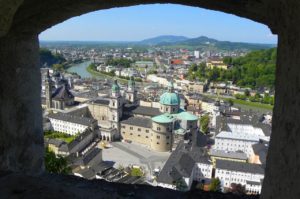
7. Rheinfels Castle and the castles of the Rhine (Germany)



8. Matsumoto Castle (Matsumoto, Japan)
It’s the only Asian Castle we’ve visited.
Built in the late 16th century, Matsumoto is one of Japan’s Top 3 Castles. It was a border post, lying on clan lines in what was Shinano Province (now part of Nagano prefecture).
Matsumoto is a ‘flatland castle’ because it’s built on a plain and not a hilltop, instead its defenses counted on a wide moat. It is made entirely of wood and everything is, to this day, is in original condition.
9. Knin Fortress (Knin, Croatia)
If you’ve taken the train between Zagreb and Split you’ve stopped in Knin. And if you looked out the window you most likely spotted the huge fortress on top of the hill above town.
Knin fortress is the largest fortress in Croatia. Built starting in the 9th century in the period of the early Croatian republics, it was (at different times) the capital of the Croatian kings as well as a defensive post strategically located in a pass between the mountainous coast and the interior. It was later conquered by the Ottomans (in 1522) and the Venetians in the late 17th century. In 1995, it was also the site of the biggest battle between Croats and Serbs. You’ll see a statue of then-president Tudman on the grounds of the fortress.
10. The Old and New Fortress (Corfu, Greece)
The small town of Corfu has 2 massive fortresses on either side.
The Old Fortress was built constructed by the Venetians in the early 15th century on the site of old Byzantine defenses. It’s a huge fortress separated from the town by a moat (which converted the citadel into an artificial island). The Fortress successfully defeated 3 Ottoman sieges between the 16th and 18th centuries. During World War II the Nazis used the fortress to imprison the Jews of Corfu before deporting them.
The New Fortress was built after the first attack by the Ottomans (in 1537). It protected the back of the town from invasion and resulted in all of Corfu being surrounded by walls. The New fortress even has underground tunnels running all the way to the Old Fortress on the other side of town.
More on Corfu and its fortresses




11. San Felipe de Barajas Castle (Cartagena, Colombia)
Built by the Spanish in 1657, San Felipe de Barajas was built to protect Cartagena from the French and English (the other major powers in the region at the time). It, along with the fortifications that surround the city and the forts in the harbour, have put Cartagena on the list of UNESCO World Heritage Sites (it’s still the most impressive colonial city I’ve seen in the Americas).
When constructed, the Castle was considered one of the largest works on the continent. It’s very impressive with massive walls, tunnels, and great views over Cartagena.
More: Why Cartagena is Incredible
12. Heidelberg Castle (Heidelberg, Germany)
Dating back to the 13th century, the counts of the Palatinate (a historical region in western Germany) built their residence here overlooking the Rhine river. Constructed using the red sandstone of the Neckar valley, the castle stands out with its colour.
Unfortunately most of the Castle is a ruin, the result of wars (the Thirty Year’s War and the Palatine War of Succession) and lightning strikes. It was in fact 2 lightning strikes in 1764 that left the castle in the state it is in today.
Still, this a romantic Castle that is considered one of the most significant cultural monuments in Germany
More: What’s Heidelberg like
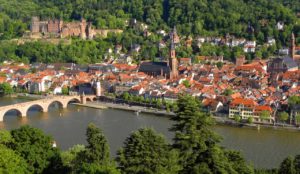
13. Ehrenberg Castle Ensemble (Reutte, Austria)
At the top of this post I mentioned Neushwanstein Castle in Bavaria. We found it touristy, overrated, and were generally disappointed with it.
BUT 20 km away, across the border in Austria, are the Ehrenberg Castle Ensemble, a series of 3 castles/fortresses nestled in a large valley in the Alps. And chances are you’ll see few tourists there.
The castle and forts was built in the 13th century and was the seat of power in the area. Many battles were waged here, most against the Bavarians. In 1632 the castle fought off 16,000 Swedish soldiers.
Today what’s left are ruins in a magnificent setting looking over the mountains.
More: A Visit to Reutte and the Ehrenberg Castle Ensemble
14. Český Krumlov Castle (Český Krumlov, Czech Republic)
Český Krumlov Castle is the 2nd largest castle in the Czech Republic (after Prague Castle) and is a UNESCO World Heritage Site.
Built starting in 1240 by a rich Bohemian family (Bohemia is the western region of the Czech Republic), the castle has Baroque, Renaissance and Gothic elements. The Castle attracted Bohemian aristocracy, patrons of culture and arts, and prominent politicians. It led to Český Krumlov being a lively and cultural town (the castle contains the best preserved Baroque theatre in Europe).
More: Why you should visit Český Krumlov
15. Aljaferia Palace (Zaragoza, Spain)
Most people are surprised to hear that Muslim rule extended all the way to Zaragoza. The Aljaferia, a fortified palace/fortress, was built during the second half of the 11th century (completed between 1065 and 1081) and was one of the most northerly outposts of Al-Andalus (ie. Muslim-controlled Spain). It is today a UNESCO World Heritage Site.
More: Aljafería Palace (Zaragoza)
16. Kalemegdan Fortress (Belgrade, Serbia)
Belgrade is one of the oldest cities in Europe and the spot where Kalemegdan Fortress is built (on the confluence of the Danube and Sava rivers) dates back more than 7000 years, from Celtic tribes to the Romans, the Byzantines, the Hungarian Empire and the Ottoman Empire.
The huge fortress that stands here today has been rebuilt countless times. the latest time in 1723 – 1736 when under Austrian rule. It’s nicknamed the “White Fortress” and there’s lots to see including 2 of Belgrade’s oldest churches, a military museum, and great views over the Danube.
More on What to see in Belgrade
17. The Fortresses of Šibenik (Šibenik, Croatia)
Šibenik has 4 fortresses, all built by the Venetians in the 16th and 17th century to defend the city from the Ottoman threat. Šibenik was the most protected city on the Adriatic.
Two of the fortresses have been restored, the other two have been mostly neglected. But all are intact and can be visited. Lots of great views.
More: Why you should Visit Šibenik



18. Râșnov Citadel (Râșnov, Romania)
About halfway between Brasov and Bran lies the town of Râșnov, known for the Râșnov Citadel.
The Citadel was built in the 11th century by Germanic Teutonic Knights as a refuge against invading Tatars. It was expanded upon by Saxons who came to Transylvania from Germany in the 12th century – encouraged by the rulers at the time – to build up the land and defend the southern borders of what was the Hungarian Empire. Essentially a fortified hilltop village, the Citadel repealed the first Ottoman sieges in the 1400’s and did so again in the late 1600’s.
More on Râșnov and other highlights around Brasov.
19. São Jorge Castle (Lisbon, Portugal)
Lisbon is one of the oldest cities in Europe and the site that this castle stands on has had fortifications since the 1st century BC (having been ruled by the Phoenicians, Carthaginians, Romans and Moors).
The present castle was built by the Moors in the 10th century. It would later be conquered by Christians in 1147 and would become the fortified residence of the governor when Lisbon became capital of the Kingdom in 1255. The castle sits on a hill overlooking central Lisbon and has great views in all directions.
20. Essaouira (Morocco)
Essouira is a UNESCO World Heritage Site with a history dating back to the 5th Century BC. The Phoenicians, Carthaginians and Romans took turns controlling the town. Eventually the Portuguese took over and built the first fort here in the 15th Century.
But it was the Moroccan king, Mohammed III, who (in the mid 1700’s) oversaw the fortifications you see today. Essaouira would become Morocco’s principal port.
More: A Visit to the UNESCO beach town of Essaouira
I’ve left out a lot of castles and fortresses above. A few that come to mind: Veste Coburg (Coburg, Germany), St. Lawrence Fortress (Dubrovnik), Santa Barbara Castle (Alicante, Spain), Starigrad (Omis, Croatia), Kamerlengo Fortress (Trogir, Croatia), The Alcazaba of Malaga (Spain), Mikulov and Lednice Castles (Moravia, Czech Republic), Budva Castle (Budva, Montenegro), Gibralfaro Castle (Malaga), Marienberg Castle (Würzburg, Germany), Sigmaringen Castle (Sigmaringen, Germany), Wawel Castle (Krakow, Poland), Eger Castle (Eger, Hungary)…and then there’s the obvious ones which I didn’t want to cover for this post: the Alhambra in Granada (Spain), Buda Castle in Budapest (Hungary), Prague Castle (Prague, Czech Republic).
What the most memorable castle that you’ve been to?
(That most people don’t know about)










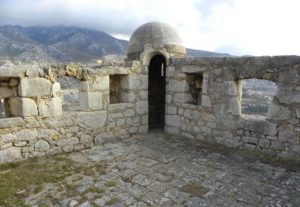








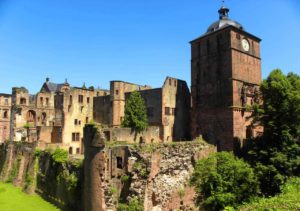



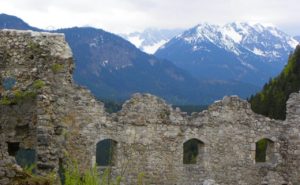



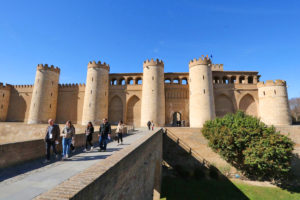






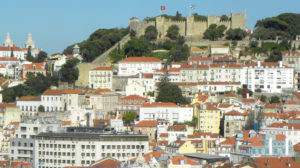



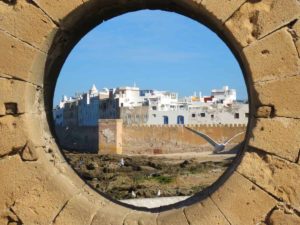




Thank you for that great list. I haven’t been to any of then…. yet.
I am a Historical Researcher, specializing in castles and have a list of 86,000 castles from all over the world.
visited around 1,000 in my time, each one very different. I have been researching for over 40 years and have
about 45,000 index cards so far and 4 computers full of information. Hopefully, I may get finished before I pop my cloggs, hopefully.
Wow! You’re castle-obsessed! 🙂 1,000 is a LOT. Have any favorites you want to share?
Sorry but most of my pictures were either on older phones, I longer have or older computers that now don’t work.
My favourite castle is Bodiam Castle on the Kent border with East sussex. A moated castle from 1385. Europe especially
Austria, France and Germany, have some really fantastic Hilltop castles.
Which would you say is yours ?.
Your e-mail like is not working, so I have reposted it here.
If you or anybody on this forum would like more information on a certain castle, please ask. Please let me know by e-mail and I will get back to you.
Thanks Steffan. Not sure which is my favorite, some I like because of the castle itself (like Peles in Romania), some I like because of the geographic location (like St. John’s Fortress in Kotor). But I always like seeing a new castle 🙂
ok, I must brag and say that I’ve visited 6 of these:)) and heard of most others:)) great list
great list only been to a handful – Peles is truly spectacular inside! i have many more to check out it seems!
Hi Frank and Lisette,
You have seen many exciting castles and fortresses around the world. There is something alluring and exciting about this. They all tell an exciting story.
Thanks for the list 🙂
/Annette
Thank you for taking the time to comment Annette 🙂
I am a sucker for castles, I absolutely love visiting them. I have visited so many, but none of the ones you have mentioned here.
It is difficult to pick a favourite, from the many castles I have visited, but I would probably choose Eilean Donan Castle as my all times favourite. It is located in Scotland in a fabulous location and it has an enigmatic feel about it like no other.
I had to look it up. Wow. I like those kinds of castles, just like the one Brian mentioned in Wales.
We have to go to the UK one of these days!
Visit Wales which is the land of Castles and Song. I Lived near to Caerphilly Castle in South Wales. before moving to Belgium Near to the City of Ghent where there is also a Castle. The castle of the Counts.
Just looked up Caerphilly – I love the old castles like that, ones that haven’t been overly restored and where you feel you are stepping back in time.
Wales has been high on my list for a while. Thank you.